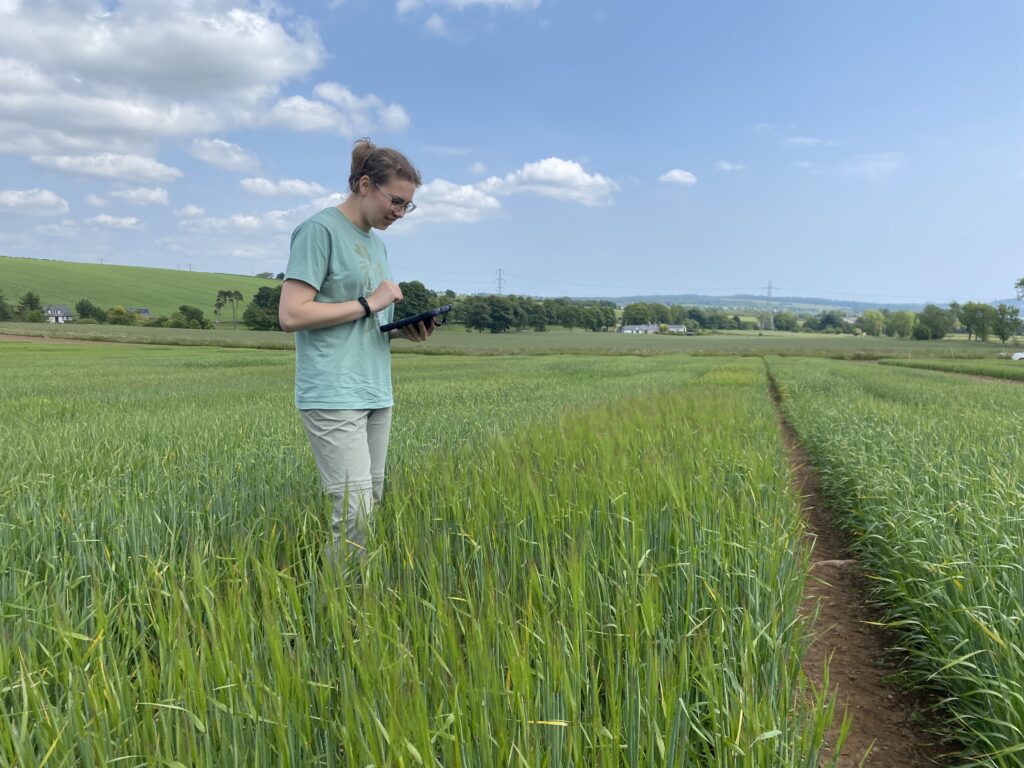How the environment and genetics shape the quality of Scottish whisky
We know that whisky is a valuable commodity to Scotland and the wider UK economy. The facts speak for themselves. In 2024 1.4 billion bottles of Scottish whisky were exported, contributing a total of £5.4 billion to the UK economy.
To make all this whisky, the UK produces on average 1.6 million tonnes of barley malt each year.
Malting is a water intensive process requiring around 5m3 of water per tonne of produced malt. Water is a precious resource so it’s important we understand the factors that affect water uptake into grain so that we can minimise water inputs for a sustainable and resilient process.
Our research has the potential to aid barley breeders in developing varieties with more efficient and consistent water uptake that could optimise steeping conditions – more on them later – and increase the quality of the malt.

How is malt produced?
The malting process can be divided into three stages, steeping, germination and kilning
· During the steeping stage (~30hrs), barley grain is soaked in water to allow water uptake which initiates the activation and production of proteins.
· The water is drained and a 3–4-day germination period begins during which these proteins break down large starch molecules into fermentable sugars.
· Finally, in the kilning stage, the grain is heated to high temperatures (~85-90˚C) to reduce the moisture content of the germinated grain and preserve the protein and malt for downstream processing. The kilning regime can be modified to impart specific flavours and colours into the malt.
Uneven or slow water absorption during the steeping process can lead to poor modification and lower malting efficiency so understanding the factors which influence water uptake is key to predicting and improving malt quality.
Why do we consider environmental and genetic factors when studying malting quality?
While differences in malting regimes and/or malt equipment used can mean one batch of malt is superior to another, the quality is also influenced by the calibre of the grain.
We define this by traits such as germination, grain size and composition, all of which can be influenced by the plant’s genetic background (its DNA) and the environment in which it is grown, the sunlight, rainfall and temperature.
Our understanding of how grain quality influences water uptake during steeping is still limited and it is this knowledge gap that forms the foundation of my PhD research. I am focusing on how genetic and environmental factors regulate water uptake and how we might use grain traits to predict and improve malting outcomes.
How do we investigate these factors?
To understand how genetic background can influence water uptake into grain during the steeping process we have grown 220 varieties in a field trial and are now exploring how water uptake during steeping differs between these varieties.
We are combining this data with genetic data to identify the genes which control water uptake during steeping. These varieties are growing in France and Dundee this year to help us see how environmental differences affect the same genetic material.
Using a subset of these varieties, we are also looking at other factors which regulate water uptake into the grain during steeping. We have already found grain size does not seem to make a difference so we’ll be looking inside the grain to determine how its composition, such as cell wall components, can affect the process. We will also use this population to explore whether we can use water uptake profile as a reliable indicator of malting performance.

There’s more
Syngenta, the industry partner for this project, has provided material to investigate how genetic background and environment can influence malting quality using a small population of elite varieties.
We grew six varieties in 13 field trial locations across Europe and will use the site environmental data we collected (rainfall, minimum and maximum temperatures and sunlight) to explore the genetic and environmental effects. Preliminary results suggest that environmental factors have a stronger influence on water uptake than genetics alone so our future work will examine whether specific environmental traits correlate with water uptake and overall malt quality.
Blog by Emily Lyon, 2nd year BARIToNE PhD student
BARIToNE (Barley Industrial Training Network) is a £3.6m Biotechnology and Biological Science Research Council (BBSRC) and industry-funded seven-year Collaborative Training Partnership (CTP) led by the Scotch Whisky Research Institute. It supports PhD researchers to carry out cutting-edge research projects driven by industry needs and focuses on the medium to long term challenge of maintaining a sustainable supply of locally high-quality barley.
Disclaimer: The views expressed in this blog post are the views of the author, and not an official position of the institute or funder.
